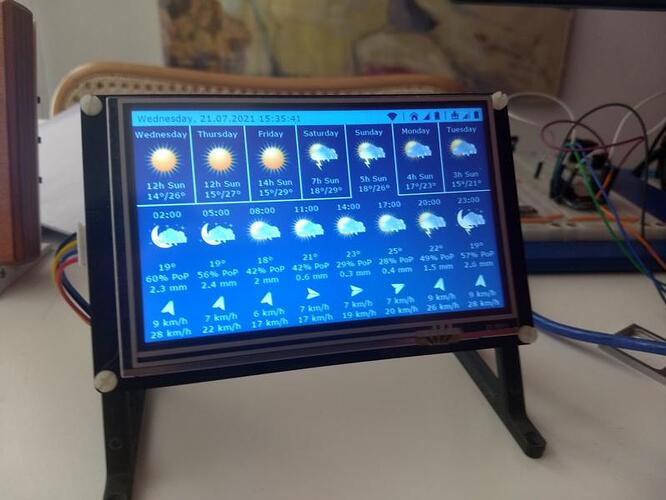Hello
I wrote a weather forecast application based on an ESP32 and NX8084K050_011.
In total 1172 images for 61 Icons:
46 animated weather icons
15 static weather icons
Serial commands are kept minimal by using variables:
First row: “vdsc0” … “vdsc6” for 7 images
Second row: “vhsc0” … “vhsc7” for 8 images
Values: -30 to +30 (negative: night, positive: day, zero: blank)
Only on changing page or changing icon will send new value (50-500/day)
Two timer cycle in 75ms:
“tmdsc” for first row, responsible for 7 icons
“tmhsc” for second row, responsible for 8 icons
Timer “tmdsc” has 2873 lines of code
Timer “tmhsc” has 3278 lines of code
On each timer event cycle as folowed:
Timer “tmdsc”: tmdsc.txt
Timer “tmhsc”: tmhsc.txt
I have tried add more(15 in total) timer but has no effect. Program Code has still the same line amount or more.
Is it even possible to simplify my code? Less lines? Any suggestions?
I’m thinking of switching to a raspberry pi without a nextion display…

